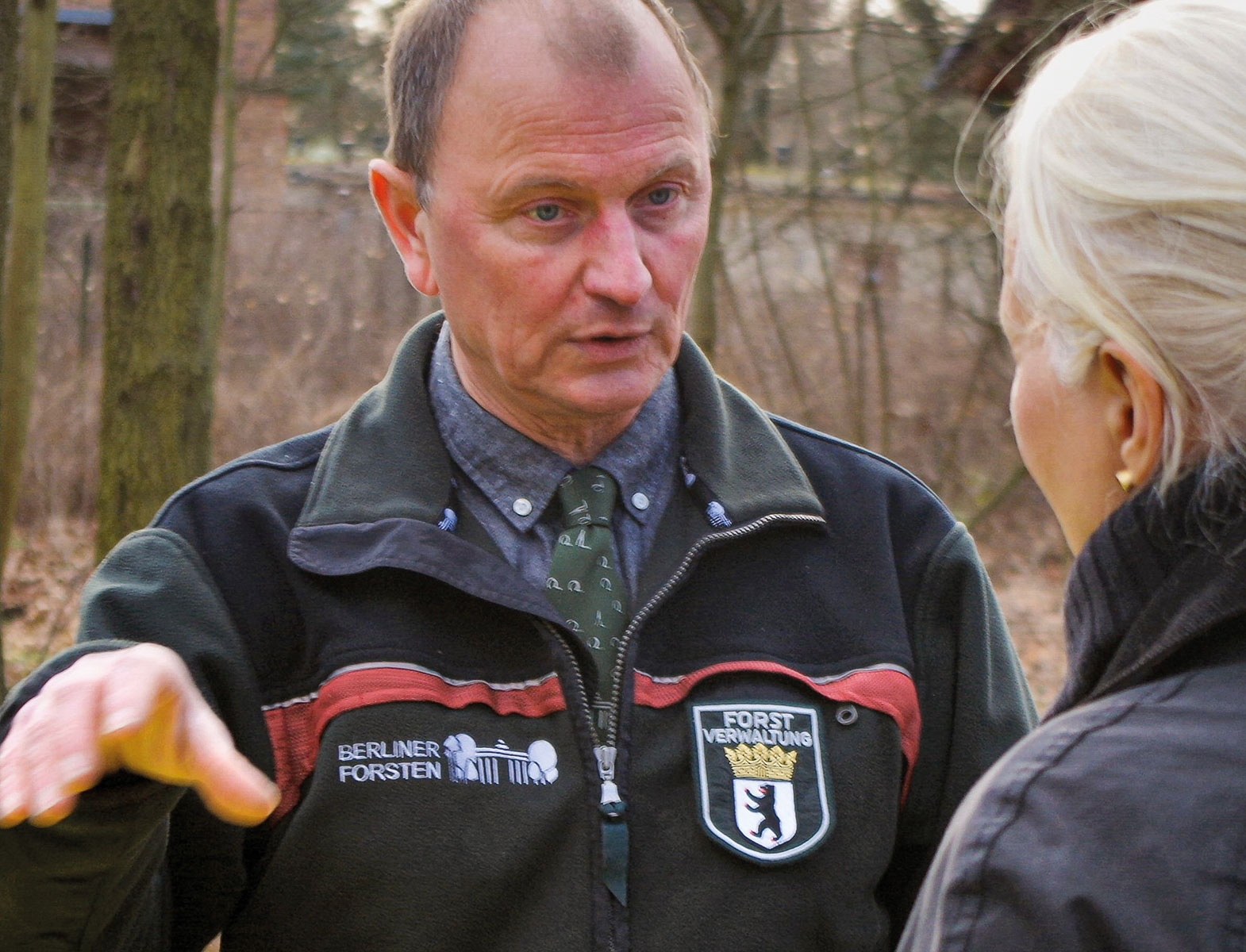How has the work of the Berlin Forestry Commission changed as a result of the changes in the climate and extreme weather conditions that we are now also seeing in Germany?
Berlin’s forest is being impacted visibly and measurably by the climate crisis. Long periods of drought and high temperatures for the fourth year in a row are putting an enormous strain on the forest. The recent report on the forest’s condition confirms these worrying developments. Pines – which make up 60 percent of the trees in Berlin’s woodlands – are particularly struggling. With this in mind, we have significantly enhanced our efforts to protect the forest by introducing targeted climate adaptation measures. For example, considerably more resources are now required to keep forest paths and roads safe. Damaged and dead trees must be continually maintained or even cut down so that they do not pose a hazard to people using the woods for leisure. Similarly, preventing and fighting forest fires has in recent years become a bigger task than it has been for a long time.
We have been mitigating the risks to our forests for many years with a large-scale program to produce climate-stable mixed-species forests. But as foresters, we think in terms of centuries. The old pines in Berlin’s forests are 100 to 150 years old. Back then, no one thought about climate change. We are now dealing with completely new questions, such as which tree species will make for a stable forest in 100 years.
At the same time, people are increasingly concerned about the forest. We receive many inquiries about the state of the woodlands and what we as the Berlin Forestry Commission are doing to preserve them. Lots of people want to get involved and plant trees themselves.
What measures will policymakers, businesses and research institutions need to take going forward in order make forestry sustainable in the Berlin/Brandenburg metropolitan region?
To meet the upcoming challenges, the Senate has significantly increased the human and financial resources available to the Berlin Forestry Commission. An additional three million euros has been allocated to the commission until the end of 2021 for forest restructuring, fire prevention, and maintenance and protection. We have also created 20 new positions (some of which have already been filled) for qualified personnel to manage the growing tasks of traffic safety in recreational forests and of transitioning to climate-stable near-natural mixed-species woodlands.
We also need an ongoing dialog with the people living in the city. We depend on their acceptance and support to achieve this historic task. Environmental education is crucial in this regard – people only want to protect what they understand. That’s why our nine Berlin forest schools play a key role for us.
I expect science and research to provide insights into climate predictions and dynamics. This is the only way we can make long-term decisions about our woodlands. We are also aided by findings from forest botany, which can guide us on crucial questions around the selection of tree species and managing the forest’s development.
What can people do in their everyday lives to protect trees and woodlands from the impacts of climate change?
Forests are natural carbon sinks. Preserving and expanding them worldwide is an important contribution to mitigating climate change – as is using durable wood products. Once CO2 has been stored in the wood, it remains there until it is used for energy or until the wood rots.
Any activity which helps protect the climate also directly protects forests and is the best investment in the future. The warmer and drier it gets, the more pressure the forest is under. So we must behave and act responsibly towards our environment.
The interview was conducted in June 2021.
Picture: Th. Wiehle / Berlin Forestry Commission


